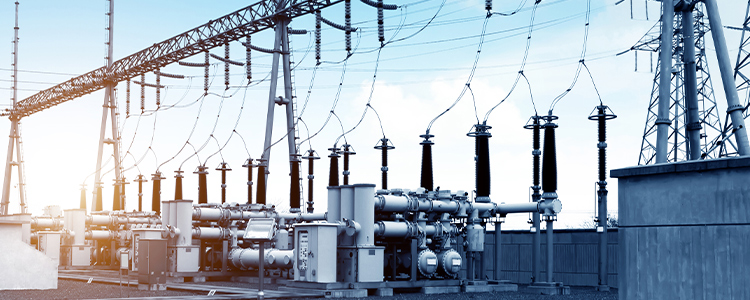- All
- Product Name
- Product Keyword
- Product Model
- Product Summary
- Product Description
- Multi Field Search


Views: 0 Author: Site Editor Publish Time: 2025-04-30 Origin: Site
Why does the power system need "reactive compensation"?
If the power system is compared to the human body, active power is the "blood" to maintain the heartbeat, and reactive power is the "oxygen" to regulate the breathing, although it does not do work, but without it, the voltage will fluctuate, the equipment will heat up, and even lead to power failure!
The reactive power compensation device is like the "intelligent ventilator" of the power system, which dynamically adjusts the reactive power:
✅ Improve the utilization rate of electric energy (the power factor is increased from 0.7 to 0.95, saving 10% of electricity bill!
✅ Stable voltage to prevent equipment from burning
✅ Reduce line loss, green and save money
1. What is the reactive power supplement device?
The reactive power compensation device is a core equipment group used for dynamic regulation of reactive power in the power system. By "absorbing" or "releasing" reactive power, it can maintain the stability of grid voltage, reduce energy loss and improve power quality.
Reactive power: does not directly do work, but provides energy for electromagnetic equipment (such as motors and transformers) to establish a magnetic field. It is the "lubricant" of the operation of the power grid.
Compensation logic: the inductive load needs capacitive reactive compensation, and the capacitive system needs inductive reactive balance, forming a "complementary closed loop".
Definition of a word:
Power equipment that can automatically "absorb" or "release" reactive power to balance the "breathing rhythm" of the grid.
for instance:
When the motor runs in the factory, it "eats" a large amount of reactive power (inductive reactive power), resulting in the "oxygen shortage", the parallel capacitor acts like an "oxygen cylinder", releasing capacitive reactive power and directly feeding the motor!
If the power grid is "oxygen surplus" (too much capacitive reactive power), the reactor immediately comes on to "absorb oxygen"!
2. Working Principle
How to "intelligently adjust" reactive power compensation?
Underlying logic: dynamic balance of electromagnetic energy.
The essence of reactive power compensation is to "inject" or "absorb" reactive power to offset the difference between reactive power between load and grid.
Its core follows the following rules:
Sagging load (such as motor): consumes sagging reactive power (Q>0) → needs capacitive compensation (capacitors release capacitive reactive power).
Capacitive system (such as long cable): capacitive reactive power is generated (Q<0) → need for inductive compensation (reactance absorber absorbs capacitive reactive power).
Dynamic compensation process:
Monitoring: real-time detection of voltage, current and power factor.
Calculation: judge whether the reactive power is inductive or capacitive, and calculate the amount to be compensated.
Operation: automatic switching of capacitors / reactors, or regulation of power electronic devices (such as SVG).
3. Common Classification
Type | Representative of The Equipment | Characteristic | Applicable Scene |
"Simplistic" Faction | Parallel Capacitor Bank | Low cost, easy to install, but fixed capacity. | Factory, community distribution room. |
"Flexible" Faction | SVC (static var compensator) | It can be continuously adjusted, but it produces harmonics. | Arc furnace, rolling mill. |
"High-Tech" Faction | SVG / STATCOM | Fast response (<5ms), less harmonics, but expensive. | High-speed rail, data centers. |
"Veteran" Faction | Rotatory Condenser | It has large inertia and strong support force, which is suitable for super large power grid. | New energy power stations and ultra-high voltage hubs. |
Selection of words:
The budget is limited to select capacitor groups, requiring fast response to select SVG and ultra-high voltage to select controllable high resistance!
4. Common sense for beginners: Avoid these pitfalls!
① Power factor is not always better!
The national standard requires more than 0.9, but overcompensation (power factor>0.99) will cause the voltage to soar and burn out the equipment!
② Capacitors are afraid of harmonics!
In a harmonic environment, the capacitor will "amplify" the harmonic current → a reactor (reactance rate 4%~7%) must be connected in series!
③ The timing of switching is important.
Do not close the circuit with power on! Wait 5 minutes after power off (discharge is complete), otherwise you may be electrocuted.
④ Look at three points for daily maintenance.
Capacitor: blister, oil leak? Replace immediately!
Contact point: regular temperature measurement to prevent loosening and heating
Environment: humidity over 80%? Install a dehumidifier!
The reactive power compensation device is the "invisible guardian" of the power grid. From old capacitors to intelligent SVG, the technology iteration is only for more efficient and reliable! If you are a new power person, remember: "make up for the lack of capacity with capacity, make up for the lack of sense with sense, dynamic balance is the key", easy to play with reactive power compensation!